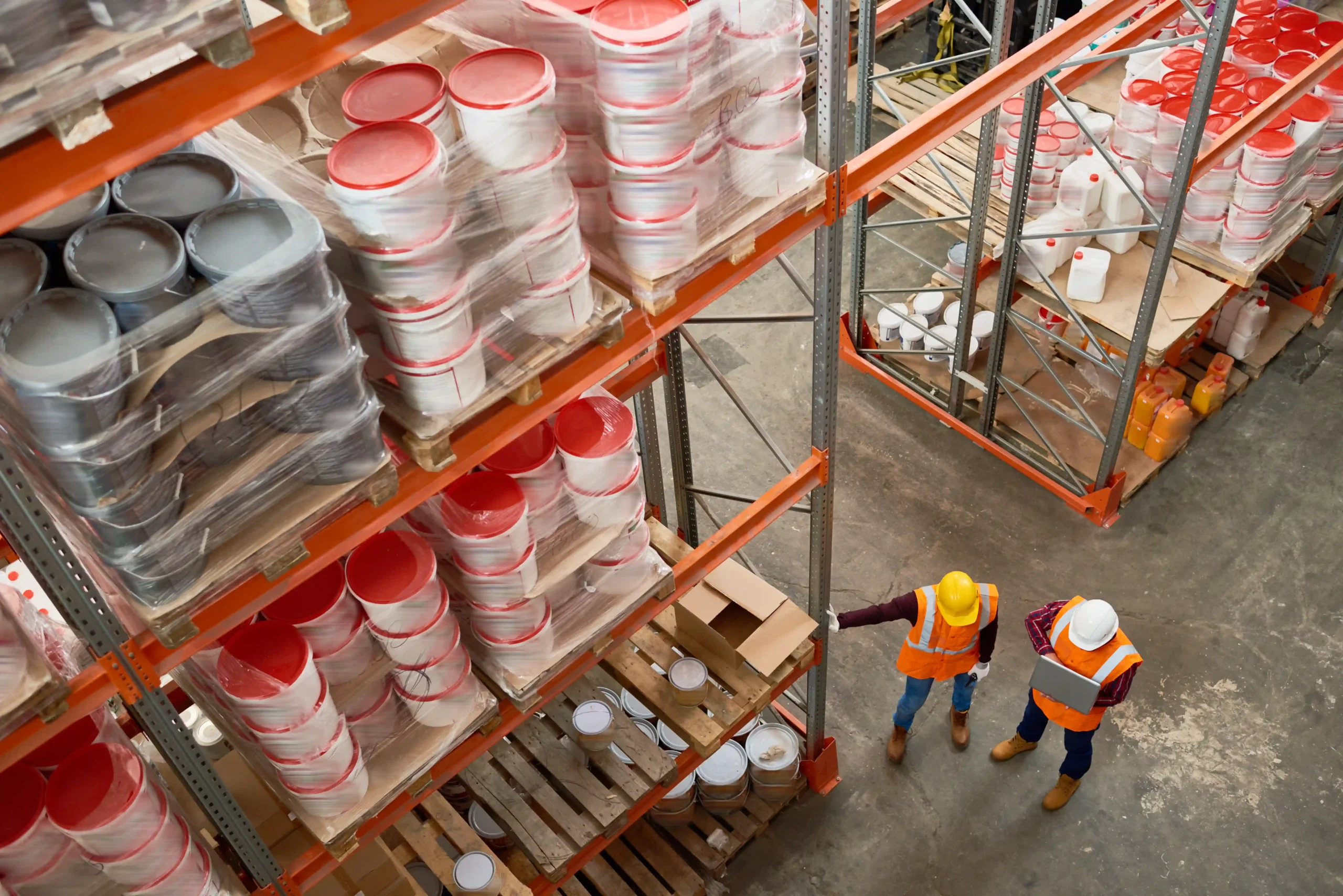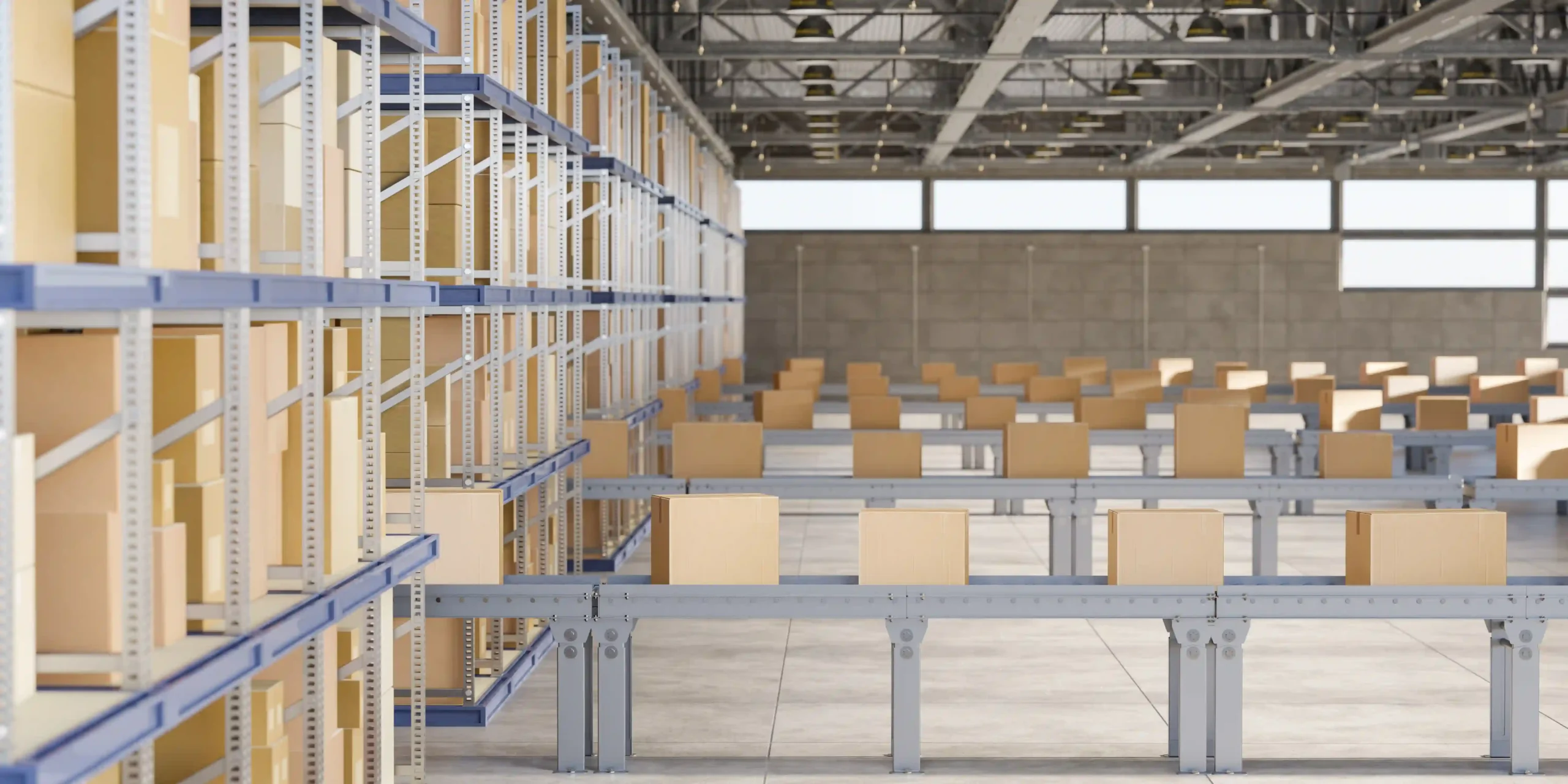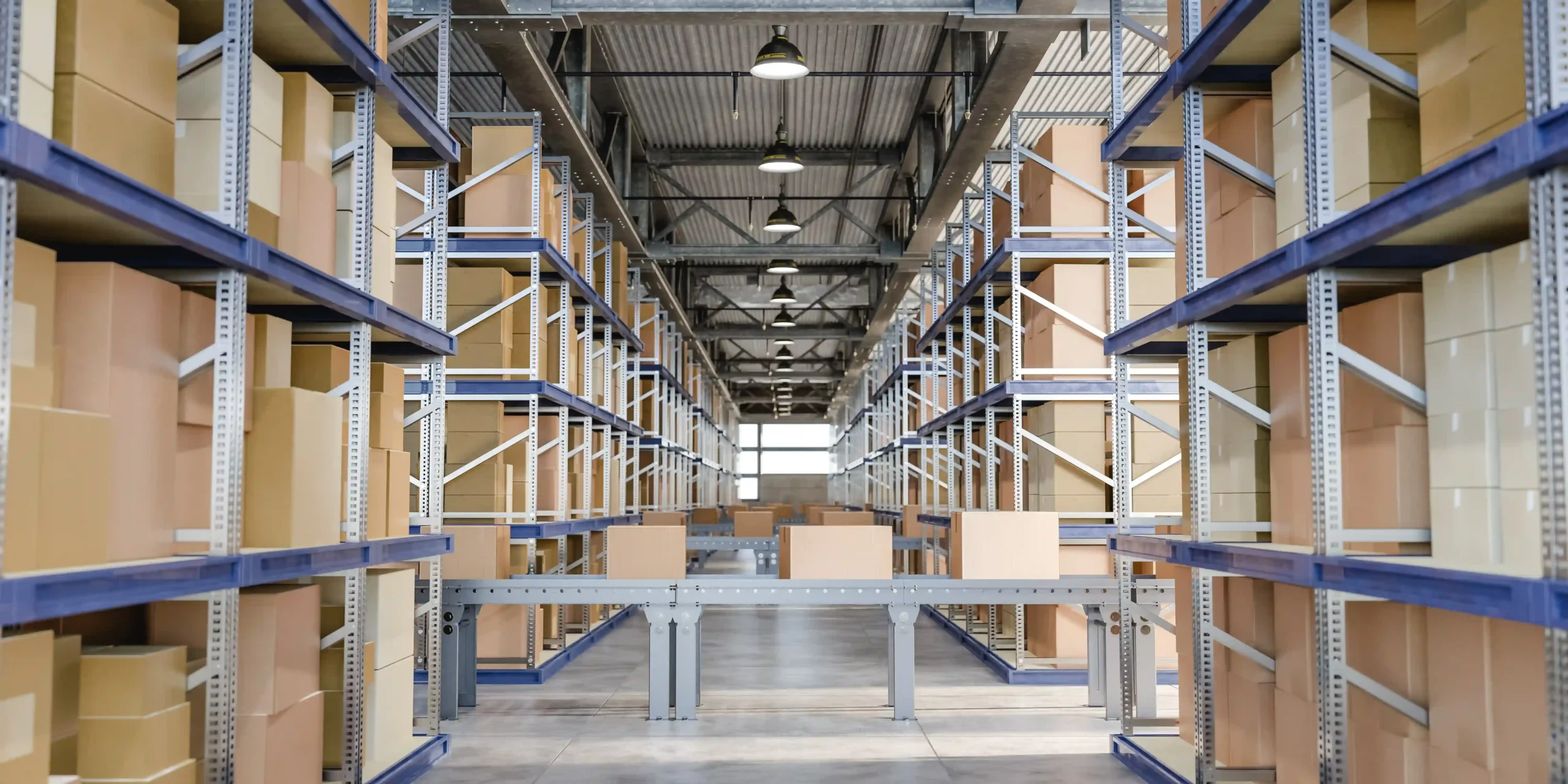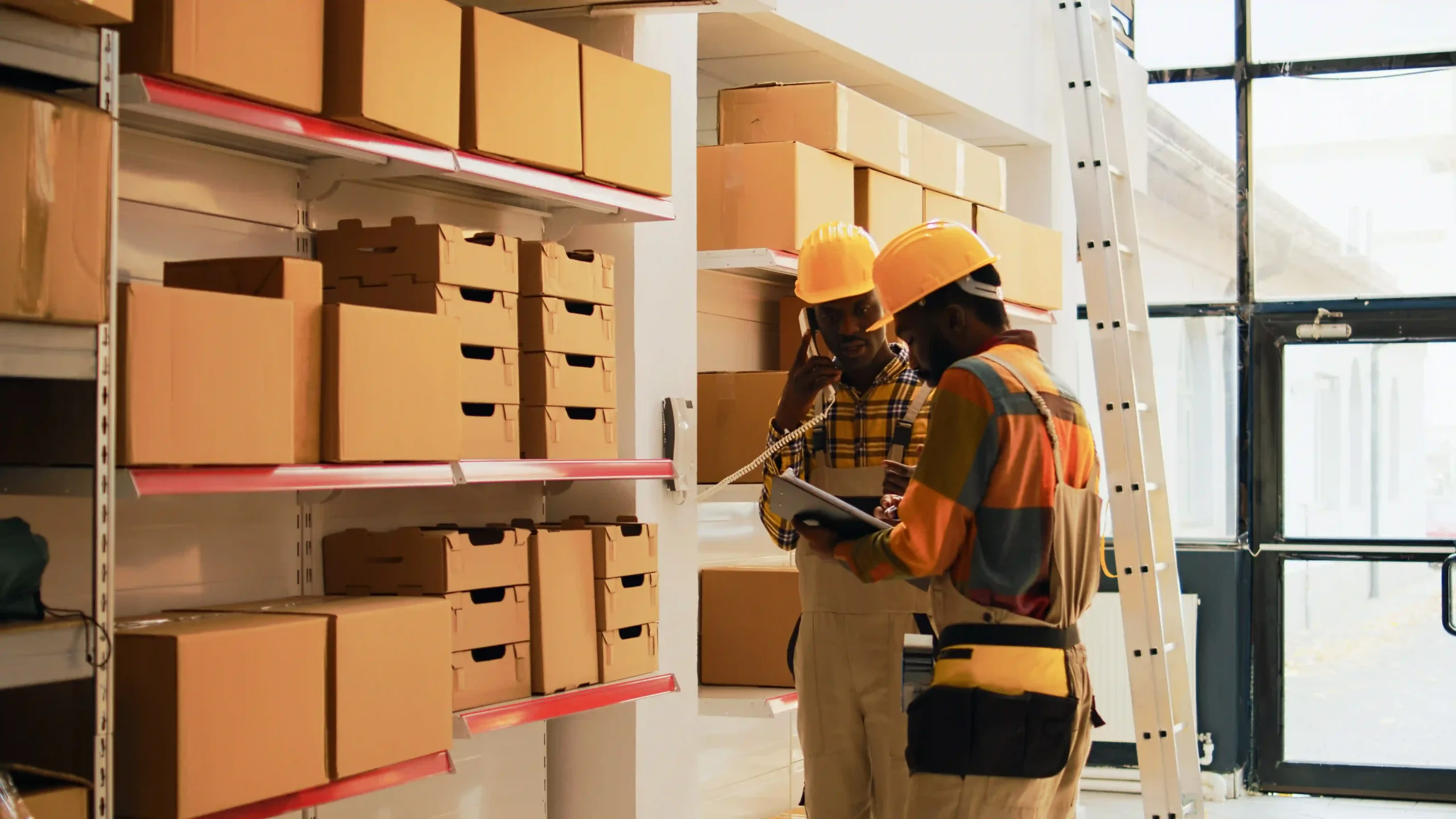Storage solutions for warehouses encompass a range of systems and strategies designed to organize, store, and manage inventory efficiently. These solutions aim to maximize space utilization, streamline operations, and enhance inventory control.
Common storage systems include pallet racking, shelving units, mezzanine floors, and automated storage and retrieval systems (AS/RS). Selecting the appropriate storage solution depends on factors such as the types of goods stored, warehouse layout, and operational requirements.

In my 35 years at Tri-Link FTZ, I’ve witnessed firsthand how effective storage solutions can transform warehouse operations. Efficient storage not only maximizes space but also improves workflow, reduces handling times, and enhances inventory accuracy.
For instance, implementing pallet racking systems allowed one of our clients to increase their storage capacity by 40% without expanding their facility. Such improvements directly impact the bottom line by reducing overhead costs and increasing throughput.
Selecting the right storage system is pivotal for operational efficiency. Here’s an overview of common storage solutions:
Each system has its advantages, and the choice depends on specific warehouse needs and inventory types.
Determining the most suitable storage solution involves several considerations:
At Tri-Link FTZ, we conduct comprehensive assessments to recommend storage solutions that align with our clients’ operational goals.

Implementing effective storage solutions offers numerous advantages:
These benefits contribute to a more responsive and cost-effective supply chain.
Utilizing vertical space is a cost-effective strategy to increase storage capacity. Installing mezzanine floors or high-rise racking systems allows warehouses to store more goods without expanding their footprint.
For example, one of our clients increased their storage capacity by 60% by adding a mezzanine level, avoiding the need for a new facility. Vertical storage also improves organization by segregating inventory based on movement frequency, with fast-moving items placed at accessible heights.
Understanding the distinction between static and dynamic storage is crucial:
Dynamic systems often incorporate technology to automate retrieval and storage, enhancing efficiency. The choice between static and dynamic systems depends on factors such as inventory variability, order volume, and labor availability.

Pallet racking systems are a cornerstone of warehouse storage solutions. They offer several benefits:
By reducing clutter and keeping heavy goods secured off the floor. I’ve seen firsthand how switching from floor stacking to selective pallet racking reduced product damage for one of our retail clients by over 25%.
That kind of improvement doesn’t just protect your goods—it builds trust across your supply chain.
In today’s logistics landscape, incorporating technology into your storage systems is no longer optional—it’s a competitive advantage. Automated storage and retrieval systems (AS/RS), vertical lift modules, and horizontal carousels all support faster order fulfillment, fewer errors, and less physical strain on workers.
What’s more, these systems can often be integrated with warehouse management systems (WMS), allowing real-time inventory tracking, automated restocking alerts, and improved slotting. I’ve worked with clients who reduced their picking time by 60% after implementing WMS-integrated AS/RS systems.
One of the most powerful benefits is the ability to track SKU movement with precision. You know exactly where each item is, how fast it moves, and when it needs to be replenished.
This level of visibility drives smarter decisions and supports lean warehousing strategies. As consumer expectations around speed continue to rise, smart storage is one of the most important ways to future-proof your operations.
Budget is always a factor when we’re designing a warehouse storage plan for a client. Whether you’re a startup e-commerce company or a long-established distribution center, you need to weigh initial costs against long-term ROI.
Static solutions like standard shelving or selective pallet racking often have lower upfront costs but may require more floor space and labor in the long run. On the other hand, automated systems are a larger investment up front but can save money over time through labor reduction and space optimization.
Here’s a quick cost comparison table to illustrate:
Storage Type | Upfront Cost | Space Efficiency | Labor Savings | Scalability | Tech Integration |
Static Shelving | Low | Moderate | Low | Moderate | None |
Pallet Racking | Medium | High | Medium | High | Basic (WMS) |
Mezzanine Floor | High | Very High | Medium | Very High | None |
AS/RS | Very High | Very High | Very High | High | Full |
Mobile Shelving | Medium | High | Medium | Moderate | Limited |
Costs vary based on configuration and industry, but the best solution is one that balances immediate needs with long-term flexibility. At Tri-Link FTZ, we always run a cost-benefit analysis with our clients to make sure the investment fits their goals, timeline, and available space. Read more here.

Storage optimization isn’t just about capacity and speed—it’s also about keeping people and inventory safe. Poorly designed or overloaded storage systems are a major cause of workplace accidents, something we take very seriously after more than three decades in the logistics business.
That’s why every solution we offer meets industry standards for load capacity, stability, and durability. Installing anti-collapse mesh panels, safety netting, and corner protectors is standard practice in our warehouse builds.
For high-value or regulated goods, we also recommend adding wire partitions or locked enclosures to limit unauthorized access. When automated systems are involved, emergency shutoff protocols and protective fencing are critical to protect workers from moving parts.
In one recent project, we helped a client reduce forklift-related incidents by restructuring their layout to separate foot traffic from storage areas using mesh fencing and one-way aisles. Safer layouts create more confident teams and more reliable operations—two essentials in any supply chain.
It’s easy to think of storage systems as passive infrastructure, but the truth is, they play a massive role in active inventory management. Proper storage improves SKU visibility, supports FIFO (first-in, first-out) practices, and reduces stock discrepancies.
When your items are clearly labeled, consistently slotted, and accessible through structured pick paths, your entire operation runs smoother. At Tri-Link FTZ, we’ve implemented storage strategies that have reduced inventory errors by over 40% for some of our partners.
These improvements came from combining dynamic storage setups with software like barcode scanning and RFID tagging. The result?
Faster cycle counts, fewer backorders, and more accurate reporting. Whether you’re handling food products, electronics, or seasonal goods, the right storage layout supports efficient slotting and replenishment.
You get the right products in the right place at the right time—without overstocking or running out. That level of inventory control strengthens every other part of your supply chain, from purchasing to order fulfillment. Read more here.
We’ve walked through the major components of choosing and implementing effective storage solutions for warehouse environments. Every warehouse is different, but the key principles stay the same: maximize space, reduce waste, boost accuracy, and build systems that grow with your business.
At Tri-Link FTZ, we’ve spent over 35 years helping our clients achieve just that. We’ve worked across industries, facility sizes, and technologies—and no two storage plans look alike.
From static shelving for lightweight parts to full-scale AS/RS systems that integrate with modern WMS platforms, our approach is always the same: listen first, design second. That’s how we’ve earned the trust of our partners and stayed ahead of evolving logistics trends.
And when it comes to storage solutions for warehouse operations, it’s never about “set it and forget it.” It’s about setting your operation up to win—today and tomorrow.
If there’s one thing I’ve learned after decades in the logistics space, it’s this: the best storage solution isn’t the most expensive or the flashiest—it’s the one that fits your operation like a glove. It should align with your inventory type, support your workforce, scale with your business, and deliver returns on efficiency and accuracy.
At Tri-Link FTZ, we approach every project with this in mind. When companies come to us looking for help with storage solutions for warehouse operations, we start by learning their pain points—maybe it’s lost inventory, maybe it’s wasted floor space, maybe it’s outdated racking that’s no longer safe.
From there, we conduct a full facility audit, map out inventory flow, and design a solution that’s both practical and forward-thinking. Sometimes that means going vertical with a mezzanine. Other times, it means installing barcode-friendly shelving for pick-and-pack operations.
For clients with rapid growth, we often recommend modular AS/RS units that can scale without reworking the entire layout. Regardless of the approach, we always put strategy before structure.
Because the right storage system doesn’t just hold your inventory—it supports your success. With over 35 years of experience, we know that effective storage solutions for warehouse environments are about more than just metal racks or high-tech robotics.
They’re about people. They’re about solving today’s challenges while planning for tomorrow’s opportunities.
And they’re about making your warehouse work harder and smarter for your bottom line. If you’re ready to explore how Tri-Link FTZ can help you optimize your space, reduce costs, and take control of your warehouse operation, reach out to us.
Let’s build a system that works for you—not the other way around.
Share this article
We have other resources available upon request as well as one-on-one support and personalized answers, just like our services.
Simply contact us anytime and we’ll get back to you to answer your questions and provide meaningful answers that show you how Tri-Link supports your logistics, reduces costs, and accelerates efficiency.
Tri-Link delivers exceptional FTZ and 3PL services tailored to your global trade needs.
Our solutions combine innovation, quality, and efficiency to exceed your expectations and meet your specific requirements.